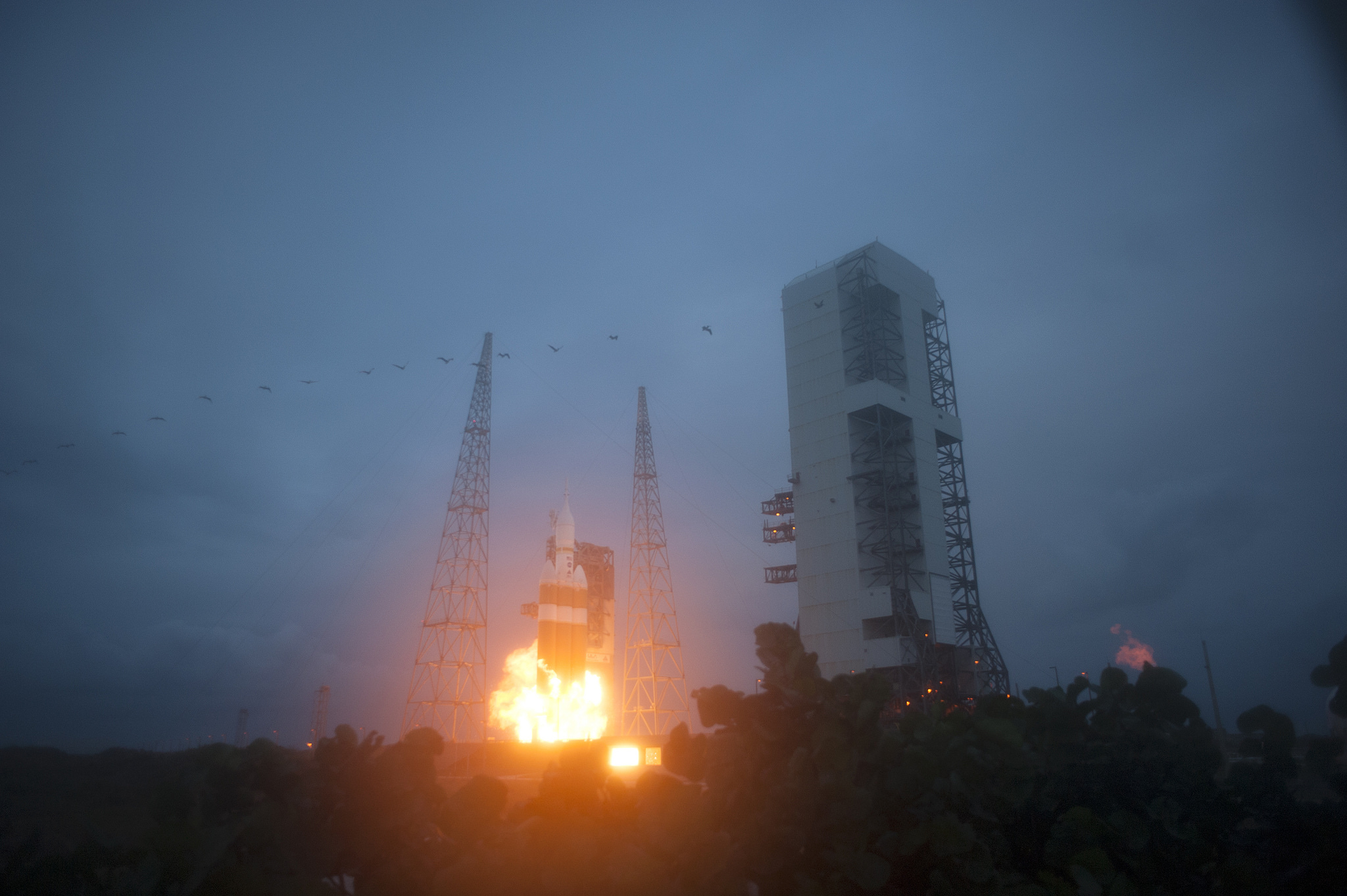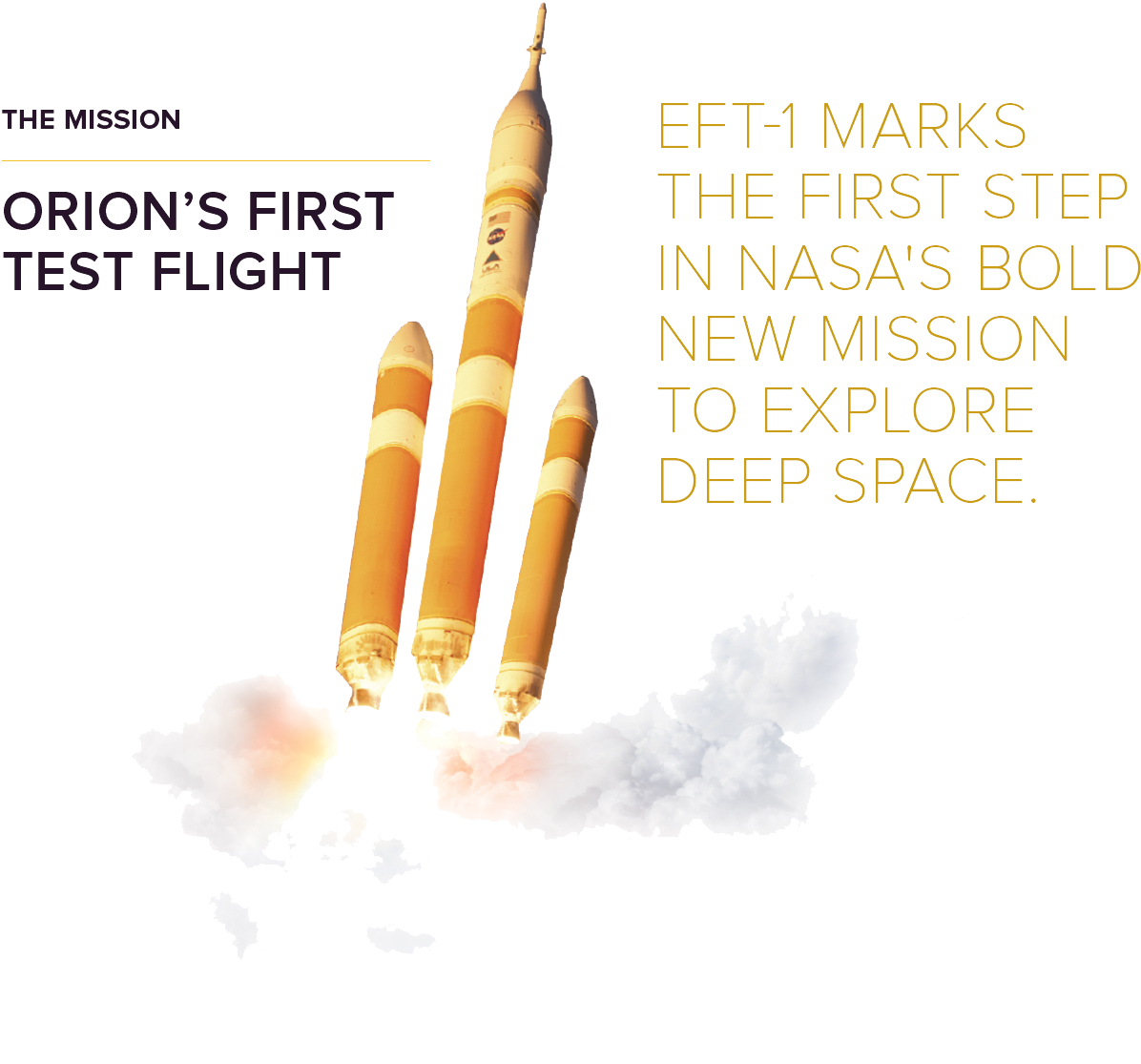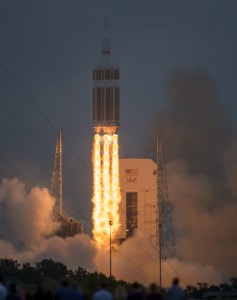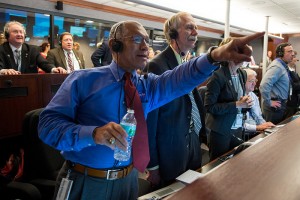
Photo: NASA
About EFT-1
EFT-1 – or Exploration Test Flight-1 – was the first test of the Orion spacecraft that is destined to return human beings to deep space for the first time since the Apollo program ended in the 1970’s.
Orion blazed into the morning sky at 7:05 a.m. EST, lifting off from Space Launch Complex 37 at Cape Canaveral Air Force Station in Florida on a United Launch Alliance Delta IV Heavy rocket. The Orion crew module splashed down approximately 4.5 hours later in the Pacific Ocean, 600 miles southwest of San Diego.
The United Launch Alliance Delta IV Heavy rocket with NASA’s Orion spacecraft mounted atop, lifts off from Cape Canaveral Air Force Station’s Space Launch Complex 37 at at 7:05 a.m. EST, Friday, Dec. 5, 2014, in Florida.Credits: NASA/Bill Ingalls
During the uncrewed test, Orion traveled twice through the Van Allen belt where it experienced high periods of radiation, and reached an altitude of 3,600 miles above Earth. Orion also hit speeds of 20,000 mph and weathered temperatures approaching 4,000 degrees Fahrenheit as it entered Earth’s atmosphere.
Orion will open the space between Earth and Mars for exploration by astronauts. This proving ground will be invaluable for testing capabilities future human Mars missions will need. The spacecraft was tested in space to allow engineers to collect critical data to evaluate its performance and improve its design. The flight tested Orion’s heat shield, avionics, parachutes, computers and key spacecraft separation events, exercising many of the systems critical to the safety of astronauts who will travel in Orion.
NASA Administrator Charles Bolden and William Gerstenmaier, Associate Administrator for NASA’s Human Exploration and Operations Directorate, and others in Building AE at Cape Canaveral Air Force Station in Florida monitor the Orion spacecraft as it returns to Earth and splashes down in the Pacific Ocean.Credits: NASA/Bill Ingalls
On future missions, Orion will launch on NASA’s Space Launch System (SLS) heavy-lift rocket currently being developed at the agency’s Marshall Space Flight Center in Huntsville, Alabama. A 70 metric-ton (77 ton) SLS will send Orion to a distant retrograde orbit around the moon on Exploration Mission-1 in the first test of the fully integrated Orion and SLS system.



